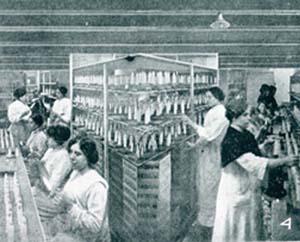
Despite the fact that in the Modern Age, most women were not allowed to receive a formal training at the arts guilds (such as those of painters and sculptors), at that time there were some important female artists because some guilds did allow them to learn the trade officially, as was the case in Haarlem (Holland), or because they were the daughters of a master artist, and they received formal training from their father. Due to one or another of these reasons, in the 17th and 18th centuries some renowned women painters emerged, such as the Italians Artemisia Gentileschi (1593-1658) and Sofonisba Anguisola (1532-1623). There were no similar cases of women painters in Spain or in Catalonia, but there were some female sculptors – such as Luisa Roldán (1652-1706) – as well as a few artists of a lesser standing than those mentioned above. The abolition of the guilds in around the mid-19th century did not bring about an immediate change in this absence of women artists. The situation began to change in the late 19th century, with the emergence, in Catalonia, of artists such as Lluïsa Vidal (1876-1918), whose work has sometimes been attributed to Ramon Casas, owing to its high artistic quality
Cycle: Lectures on the History of Women’s Work in Catalonia, 18th-20th century
Organized by: Residence for Researchers